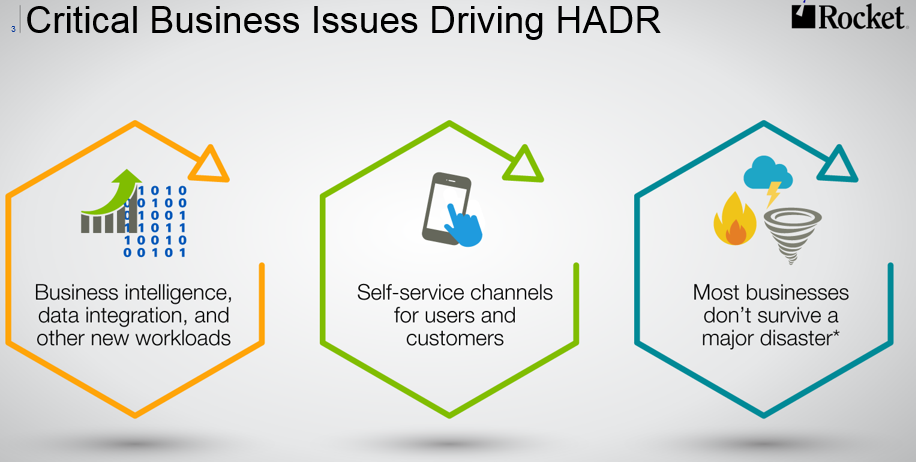The Value of High Availability Data Recovery in the MultiValue World

Written by Vinnie Smith, Managing Director, R&D at Rocket Software
It happens to the best of us: You’re working on a PowerPoint deck, doing data entry, or maybe writing the next Man Booker Prize-winning novel. Then the power goes out, and when you boot up again, the shutdown somehow fried your save file. Sometimes the files are salvageable, and sometimes days – or even weeks – of work are wasted. Now imagine if instead of one person’s project, the file destroyed is a MultiValue database tracking the activities of an entire company. To prevent catastrophe, firms must absolutely invest in high availability/disaster recovery (HA/DR).
What HADR Does
HADR is a two-part solution that ensures a database’s integrity in what would otherwise be a serious data loss. High availability software repairs lost data from a system failure swiftly and accurately, while disaster recovery automatically shifts data to other servers anywhere in the world, creating backup in case the original server should somehow be physically destroyed by a fire, flood, earthquakes, Godzilla attack, or any other physical disaster. Combining these two systems creates a redundancy that can save important data even if the worst happens – letting professionals work without fear of losing critical information to a fluke or mishap.
A Great Value for MultiValue
MultiValue computing relies heavily on real-time or near-real-time processing speeds, and thus must be backed up constantly rather than just once or twice per day, because even a tiny break to save a file can damage information integrity. For example, in Australia, where MultiValue systems track patient data for pharmacies, making sure nobody misses a prescription or receives the wrong drug is critical. In such cases, pairing MultiValue with HADR can actually save lives.
More than anything, protecting a MultiValue database with HADR creates a system that is robust, powerful, versatile, and (most importantly) safe. HADR ensures such losses are neither catastrophic nor permanent. It’s like owning a really safe car without an auto insurance policy. Sure, the car is built to minimize danger, but nobody can say you’re fully protected without the insurance.
HA/DR is also valuable as a mechanism to add workloads without impacting performance. Reporting and Business Intelligence requests from management often create new workloads on the system that could impact production application performance. HA/DR replication cost-effectively addresses this by offloading the workload from the primary server and delivering it to the subscribing server. Production systems won’t be impacted by the loads while satisfying management demands.
Prospectus would like to thank Vinnie Smith for this Guest Blog.
Vinnie Smith, Managing Director of the U2 Development Labs at Rocket Software, brings over 30 years of MultiValue experience to the role. Vinnie started his career at SystemBuilder in the mid-1980s. Originally from the UK, Vinnie is a proud scouser (from Liverpool) with the accent to prove it. Vinnie now resides in Colorado with his wife, where he enjoys being the father of four and playing golf in the beautiful Rocky Mountains.
